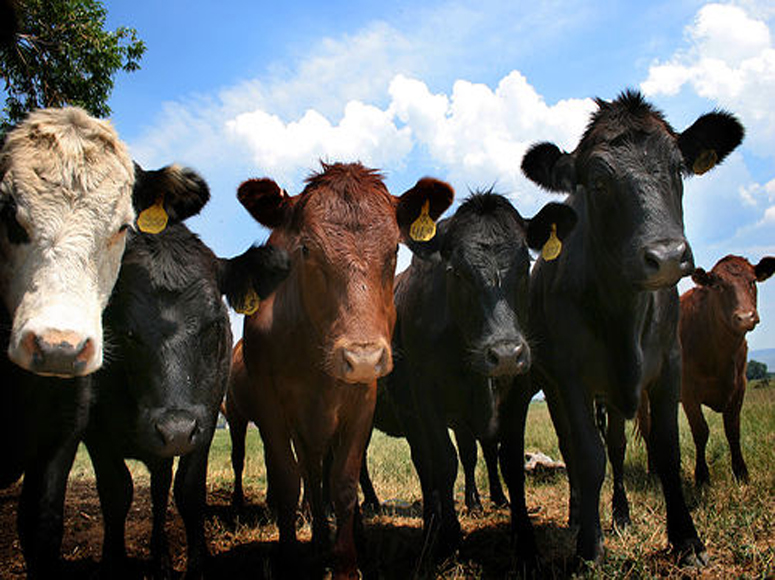
Agricultural News
Noble Foundation Finds Alternative Culling Method Increases Profits
Tue, 08 Jul 2014 10:58:07 CDT

By Jon Biermacher, Kellie Curry Raper and Billy Cook
By summer, cow-calf producers start thinking about weaning their spring calf crop and how best to manage and market older, unproductive and open cull cows. To help provide producers options for managing and marketing cull cows, researchers at the Noble Foundation and Oklahoma State University teamed up and conducted a study that evaluated the economics of two alternative management and marketing systems for retaining open beef cows.
A total of 161 cows (48 in 2008, 42 in 2009 and 71 in 2009) from a black-hided Angus herd maintained at the Noble Foundation's Red River Farm were retained in either a dry-lot feed system or in a stockpiled native grass pasture grazing system. In the drylot system, cows were provided a low cost diet of rye hay, mineral and a 20 percent cubed supplement while the native pasture system allowed cull cows access to stockpiled native grass pasture.This system allowed cows grazing access to stockpiled native grass. In addition, at the time of weaning in October, body weight, body condition score (BCS), and USDA grade and dressing percentage were obtained for each cull cow. Approximately every 30 days for a five-month period, weight, BCS, and USDA grade and dressing percentage were collected again on each cow through March (about 150 days in total).
Using feed, pasture and labor costs, and body weight, BCS, and USDA grade and dressing data collected in the study, net returns were calculated for each management system at each of five sequential marketing periods (November, December, January, February and March). In addition, the body condition scores were used to categorize cull cows into three independent size categories, including thin (BCS<5), medium (5 < BCS ? 6) and heavy (BCS>6). In each period, net return was calculated as the difference between the revenue that would be generated at marketing minus retention, feed, labor and pasture costs minus the revenue that would be generated if cows had been sold at the time of weaning. This allowed us to compare the potential profitability that a producer could expect to earn for each marketing period beyond when cows are typically culled and sold at weaning in the fall. This is also the time of year when the market for cull cows is typically at a seasonal low.
At first, we excluded the body condition scores collected in the study and accounted for the net benefits of all culled animals, regardless of their condition, and found that it was more economical to retain them on stockpiled native grass pasture and market them in February. On average, in this scenario, open cattle earned an additional $32 per head compared to marketing them at weaning in October. However, when body condition scores were used to separate cull cows by size, the results suggested that it would be more economical for producers to go ahead and market their heavier cows (BCS>6) at weaning in October and retain the medium and thin cows on stockpiled native grass pasture until at least February. This strategy resulted in an additional net return of $60 per head above what would have been earned selling them at weaning in October. So producers who have the ability to place BCS on their cull cows at the time of weaning can expect to increase the salvage value of thin and medium-sized animals beyond selling them at the time of weaning in October. Thin (BCS<5) cows realized a positive net return of $20 per head in the dry-lot system during the February marketing period, which was $40 lower than the pasture system.
Our results suggest that there are economic alternatives for producers to add value to the beef cows culled out of their spring-calving herds prior to taking them to market. However, we note that producer resources (land, labor and management) are important when making these decisions. For more information and specific details about this study, including the management and marketing systems discussed in this article, please see the following publications:
Marketing Cull Beef Cows: Does Body Condition Score Matter?
Net Returns from Feeding Cull Beef Cows: The Influence of Initial Body Condition Score
WebReadyTM Powered by WireReady® NSI
Top Agricultural News
More Headlines...



















